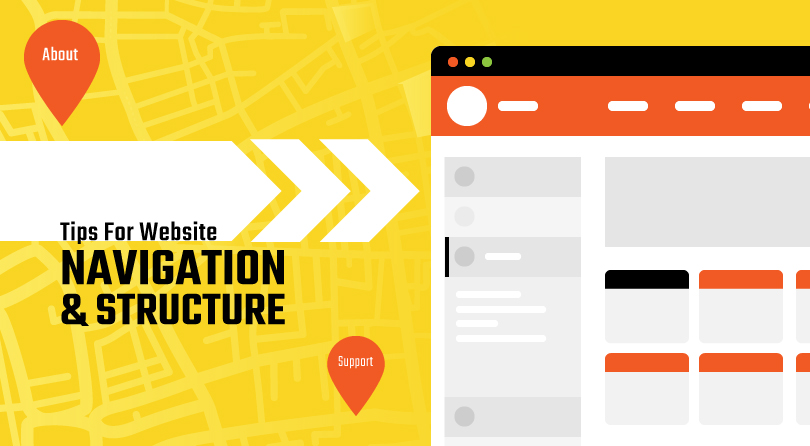A well-developed website structure goes in the long run for the success of your website. Easy navigation and a clear structure allow the user to find what they are looking with ease thereby enriching their experience on your website. What you include in your website and how a user navigates around is what differentiates between the conversion and bounce rate. It also has an effect on user experience, traffic and search engine rankings.
A defined structure makes your website meaningful and easier to understand. Categorizing posts and products increases the usability so that your audience can quickly grasp what you are selling. So how to give your website an ideal category and navigation structure?
Read along to find a few tips that will make sure you never compete with your own site and will also keep you in the good books of Google.
Website and Internal Link Structure
An exemplary website is structured like a pyramid where the homepage sits at the top and other categories and sub-categories follow beneath. This includes product pages, blog posts and other informational pages. There are many elements that an e-commerce website must have such as navigation bar, search bar, shopping cart, testimonials etc.
Divide all your content into divisions and categorize them accordingly. Make sure all sections are the same size. All pages atop the hierarchy must link to the subpages and vice versa. Broken links can be annoying to the user. This can directly harm the credibility and conversion rate of your website.
Linking helps in bringing websiteÔÇÖs overall content together, thereby giving customers more reasons to stay on your website.
Read More: Leverage upon impulsive buyers for your online storeÔÇÖs growth
Take Care of Tags and Taxonomies
For those who are unfamiliar to the term Taxonomy: itÔÇÖs the way a system (such as a website) is classified into various categories and sub-categories.
Tags and taxonomies allow for a unique connection between the content, context and users. They work as key architectural tools in making your website findable and also increase the content value through search based applications.
Use taxonomies on different webpages to improve the overall structure of your website. Categories are hierarchical and work like a table of contents, whereas tags are more like an index.
The tags must be visible to your visitors be it on the sidebar or the bottom of a page. They come handy for users who want to explore more about a similar topic. Funnel down to the specifics and present information in tip-top shape.
Use the Right Content
Make sure you leverage upon your cornerstone content as this widens the amount of information for your customers. This helps in increasing valuable traffic on your website. Use category and tag pages as your cue as these make great cornerstone articles and naturally focus on competitive keywords.
Start by giving your blog posts some extraordinary introductory content. Cornerstone content must have the ability to compel visitors to read more on your website. They must be self-explanatory, informative and should be fun to read rather than being too salesy.
Read More: Content Marketing For E-commerce websites
Some More Quick Wins
In the long run, picture your website structure to reflect your business dynamics. Always keep your website coherent by making sure your products and pages fit into your navigation. Remove product information that you do not sell and any outdated content that comes along with it.
Evaluate and plan your menu visually. Give it different levels to compensate for adding pages youÔÇÖve created over time. Make sure all categories weigh equally as any discrepancy will throw the pyramid hierarchy off balance. Create top-level priorities to focus on site structure and redirect anything that you delete.
Plan navigation keeping search engines in mind. Make sure you use labels that contain popular keyphrases. Keep few items on your menus. Doing so will help in keeping usersÔÇÖ focus on important items. Invest in concise navigation to make sure the link juice doesnÔÇÖt get diluted.
Conclusion
Use these tips to improve and keep your site navigation and structure in check. An easy structure is effective and helps both your visitors and Google to navigate your site. Prioritize changes for your own website visitors and set your own benchmarks to monitor changes in the clickthrough rates.
Navigation mistakes can be exorbitant and are usually escapable. Making objective changes is a great way to care for your clientÔÇÖs needs and to get a website that any search engine can index and scan. Website navigation and structure is crucial to the world of e-commerce, and the tips we discussed above will definitely help you plan well.



